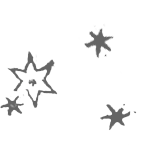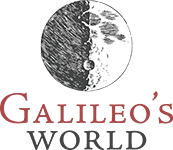Switzerland
Switzerland
Exhibit items related to Switzerland.
Exhibit Items
|
On the Revolutions of the Heavenly Spheres, 1566 Copernicus, Nicolaus (1566) Copernicus argued that the Sun rather than the Earth lies in the center of the universe. The Earth moves as a planet around the Sun, carrying its Moon along as a satellite. In 1543 little proof was available that the Earth moves; there were many reasons not to accept it. |
||
|
Works, Ptolemy Ptolemy, (1541) For this first edition of Ptolemy’s collected works, Johann Honter drew constellation figures after the manner of Albrecht Dürer. The figures appear in contemporary dress rather than in a classical style. |
 |
|
|
Treasury of Optics al-Haytham, Ibn (1572) The frontispiece depicts a variety of optical phenomena: Reflection. Refraction. Perspective. The rainbow. Burning mirrors. |
 |
|
| 2 |
On the Nature of Metals Agricola, Georg (1556) Agricola described early modern mining and metallurgy practices throughout the German speaking areas of Europe. The remarkable illustrations make this work a paramount example of how abundant visual representations in the Printing Revolution transformed science and technology. |
|
| 4 |
Studies on Glaciers Agassiz, Louis (1840) In 1840, Agassiz introduced a radical element of contingency into geohistory, contrary to then widespread assumptions of uninterrupted gradual cooling. |
 |
| 4 |
Geneva Bible , (1560) The Geneva Bible was the first lay study Bible, written in the vernacular, portable, affordable, and designed with cross-references and explanatory notes for self-study. It was the Bible of Shakespeare, of the Puritans, of settlers in the colonies of New England, and of Scotland. |
|
| 4 |
On the Fabric of the Human Body, 1543 Vesalius, Andreas (1543) Best known work of early modern anatomy: Vesalius was fortunate to team up with Jan Stephan van Calcar, a world class artist. Even the human skeletons reveal an aesthetic appreciation of the human body. |
|
| 5 |
Universal Geography Ptolemy, Claudius (1545) Although best known for his astronomy, Ptolemy (2nd century) brought the same mathematical methods to bear on various topics, including optics, geography, and astrology. This is the first printed edition of his geography, which established mathematical methods in cartography. |
 |
| 5 |
Correspondence Vesalius, Andreas (1546) ABC’s of the life of medical students: The decorative initials used in this edition of Vesalius’ correspondence are identical to 22 different initials originally printed in De fabrica (1543). Such “historiated initials” tell stories. |
|
| 5 |
Collected Works Paracelsus, (1603) Nieremberg saw an unpublished manuscript of Hernandez. Many of his descriptions of plants and animals relied upon Hernandez and other sources from Mexico and Peru. In classification, Nieremberg retained Hernandez’ use of native Nahuatl names. |
|
| 5 |
The Natural History of Plants, 1542 Fuchs, Leonhart (1542) Fuchs extracted the best knowledge available from Galen, Dioscorides and Pliny. Fuchs gave each plant a German name as well as the traditional Latin. He described nearly 100 northern European plants unknown to previous physicians. |
|
| 7 |
Anatomical Illustrations Eustachi, Bartolomeo (1716) Lost plates for treatises on teeth, hearing and the kidneys, rediscovered: In the 1560’s, Eustachi, a professor of medicine in the Collegia della Sapienza in Rome, wrote several treatises devoted to particular organs of the body, including a pioneering work on the teeth. |
|
| 10 |
On the Sphere of the Universe bar Hiyya, Abraham (1546) Abraham bar Hiyya, also known as Savasorda, was a 12th century Jewish mathematician and astronomer in Barcelona. In this beautiful introduction to astronomy, bar Hiyya’s text appears in Hebrew alongside a Latin translation. |
 |
| 14 |
Biblical Sciences Scheuchzer, Johann Jakob (1728) Biblical accounts of the creation week, deluge, and future conflagration provided early modern naturalists with an idiom for exploring changes in the Earth over time. Scheuchzer was a leading Swiss naturalist and an advocate for the organic origin of fossils. |





